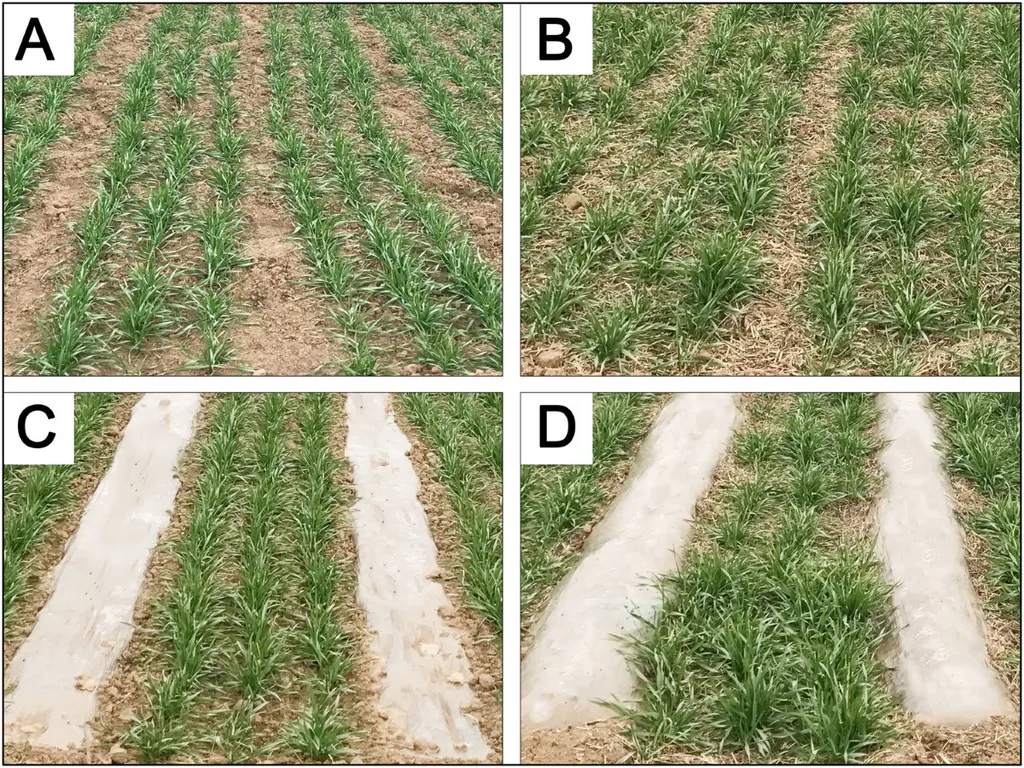In the arid expanses of dryland farming regions, water is a precious commodity, and every drop counts. A recent study led by Yueyue Xu from the Shanxi Institute of Organic Dryland Farming at Shanxi Agricultural University has shed new light on how ridge-furrow mulching systems combined with limited supplementary irrigation can influence soil microbial communities, carbon emissions, and ultimately, the efficiency of dryland farming. The findings, published in the journal ‘Agricultural Water Management’ (which translates to ‘农业水资源管理’ in Chinese), offer promising insights for the energy sector, particularly in areas where water scarcity is a significant challenge.
The study, which compared traditional planting methods with ridge-furrow mulching systems under varying levels of irrigation, revealed that the latter significantly alters carbon emissions. “Ridge-furrow mulching increased CO2 emissions but decreased CH4 absorption,” Xu explained. This shift in carbon dynamics is crucial for understanding the broader implications for carbon cycling and climate change mitigation.
One of the most compelling findings was the impact of ridge-furrow mulching on soil microbial communities. The study found that this method increased microbial richness without significantly affecting species diversity. Dominant bacterial groups like Sphingomonas and Nocardioides played a pivotal role in these ecosystems. “The functional gene diversity of carbon cycle and carbohydrate-active enzymes were studied, and we found that ridge-furrow mulching enhanced the abundance of certain enzymes while decreasing others,” Xu noted. This intricate balance of microbial activity and enzyme production is key to optimizing soil health and productivity.
The implications for the energy sector are substantial. As the world grapples with the need for sustainable agricultural practices, understanding how to maximize water efficiency and minimize carbon emissions is paramount. Ridge-furrow mulching systems offer a promising avenue for achieving these goals, particularly in dryland regions where water scarcity is a constant challenge.
Moreover, the study’s findings on carbohydrate-active enzymes and carbon cycle function genes provide a deeper understanding of the microbial-mediated carbon cycle process. This knowledge can inform the development of more effective water-saving irrigation strategies, ultimately enhancing the resilience of dryland farming systems.
As the global population continues to grow, the demand for sustainable and efficient agricultural practices will only increase. The research led by Yueyue Xu and her team at Shanxi Agricultural University represents a significant step forward in this endeavor. By elucidating the complex interactions between soil microorganisms, carbon emissions, and water-saving irrigation techniques, this study paves the way for more innovative and sustainable agricultural practices.
In the words of Yueyue Xu, “Our results can provide a scientific basis for a deeper understanding of the microbial-mediated carbon cycle process under ridge-furrow mulching with limited supplementary irrigation in dryland farming areas.” This understanding is not only crucial for the agricultural sector but also for the broader energy landscape, as we strive to create a more sustainable and resilient future.

